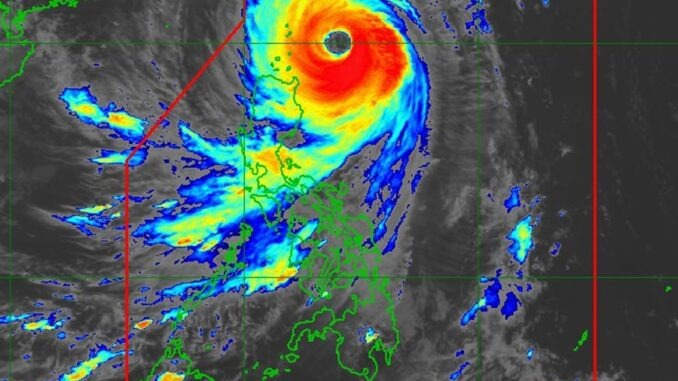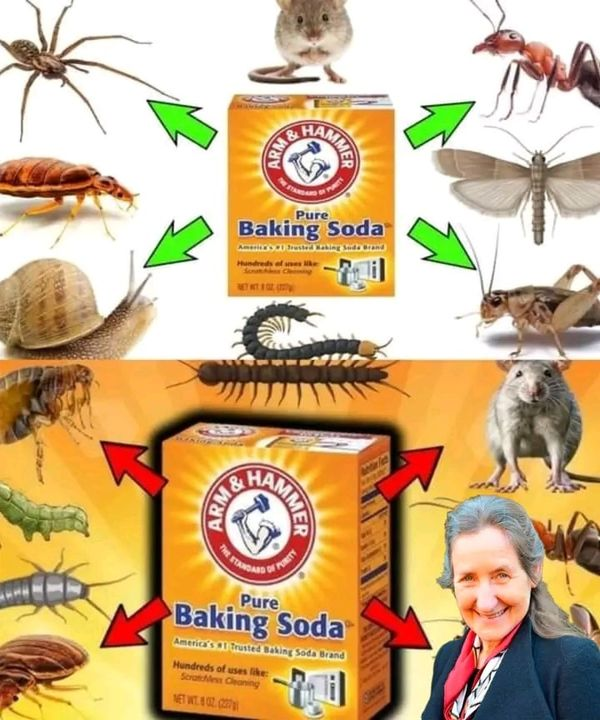
Ameteorologist has pointed out the sheer size of Typhoon Kong-rey’s eye as the massive storm approached Taiwan on Wednesday.
As of Wednesday afternoon, Typhoon Kong-rey had maximum sustained winds of 130 mph, according to the website Zoom Earth. The storm has weakened slightly since Tuesday night, when it was categorized as a super typhoon with maximum sustained winds of 150 mph, equivalent to a Category 4 hurricane. Forecasts anticipate that Typhoon Kong-rey will weaken further by the time it makes landfall in Kaohsiung in the early morning hours on Thursday.
On Tuesday night, meteorologist Noah Bergren of TV station WOFL in Orlando, Florida, commented on the size of the storm’s eye.
“Super Typhoon Kong-rey is easily one of the largest eye’s in a major tropical system you will ever see on Earth,” Bergren posted on X (formerly Twitter). “Thing is absolutely massive.”
A wave crashes outside of Fugang Harbor in Taitung, Taiwan, ahead of Typhoon Kong-rey on Wednesday. The storm is expected to make landfall in Taiwan early Thursday morning. Annabelle Chih/Getty
AccuWeather senior meteorologist Alan Reppert told Newsweek that having a large eye doesn’t necessarily imply anything about the storm’s strength.
“It just means the winds with it are farther away from the center than if it was a smaller eye,” he said. “It doesn’t necessarily have any major defining characteristic of the storm.”
Reppert added that a stronger storm that’s been around longer usually has a wider eye than a newer storm.
Most spaghetti models—or computer models illustrating potential storm paths—show Kong-rey making landfall on Taiwan’s southeast coast and cutting across the island before emerging with maximum sustained winds of around 75 mph. Models indicate that the typhoon will exhibit a northeastern turn away from China, which will take it out to the East China Sea.
Kong-rey’s strength is uncharacteristic for this time of year, The New York Times reported, adding that the typhoon is expected to make landfall equivalent to a Category 4 hurricane.
Reppert warned that strong winds up to 140 mph with higher gusts could hit southern Taiwan, though the storm is expected to weaken as it moves over the island. An AccuWeather report warned of “significant structural damage, mudslides and landslides” from the storm, as up to 3 feet of rain is expected to lash Taiwan. The storm could either maintain its intensity or strengthen before it makes landfall early Thursday.
Eastern China and Japan also are expecting heavy rain as the storm progresses.
A typhoon is classified as a severe tropical cyclone occurring in the Northwest Pacific. A hurricane is the term for the same type of storm in the Northeast Pacific and Northern Atlantic. Outside of these regions, the storms are called tropical cyclones.
How to Use Baking Soda to Get Rid of Pests Naturally

Baking soda is a versatile and eco-friendly solution to combat pests like cockroaches, fleas, ants, moths, mice/rats, and spiders. It’s safe, non-toxic, and easy to use around the home. Here’s how you can effectively use baking soda to deal with each type of pest:
1. Cockroaches
Why It Works: Baking soda reacts with the acids in a cockroach’s stomach, killing them effectively.
How to Use:
- Mix equal parts baking soda and sugar in a shallow dish or sprinkle the mixture in areas where cockroaches are active.
- The sugar attracts them, and the baking soda does the rest.
- Place the bait near cracks, under sinks, or behind appliances.
2. Fleas
Why It Works: Baking soda dehydrates fleas and their eggs.
How to Use:
- Sprinkle baking soda liberally on carpets, pet bedding, and upholstery.
- Use a stiff brush to work it into the fibers, then leave it for several hours or overnight.
- Vacuum thoroughly to remove fleas, eggs, and baking soda residue.
- Repeat weekly for effective flea control.
3. Ants
Why It Works: Baking soda interferes with ants’ digestive systems when ingested.
How to Use:
- Mix equal parts baking soda and powdered sugar.
- Sprinkle the mixture along ant trails, near entry points, and around the kitchen.
- The sugar lures ants, while the baking soda disrupts their metabolism.
4. Moths
Why It Works: Baking soda absorbs moisture and odors that attract moths.
How to Use:
- Place sachets filled with baking soda and a few drops of essential oil (like lavender) in closets, drawers, or storage boxes.
- For extra protection, sprinkle baking soda on carpets and vacuum after a few hours to deter moth larvae.
5. Mice and Rats
Why It Works: Baking soda produces gas that rodents cannot expel, which eventually kills them.
How to Use:
- Combine baking soda with peanut butter or flour to make a bait.
- Place small portions in areas where you’ve noticed rodent activity, such as along walls or in hidden corners.
6. Spiders
Why It Works: Baking soda acts as a natural deterrent for spiders.
How to Use:
- Sprinkle baking soda around the perimeter of rooms, under furniture, or in dark corners where spiders hide.
- Alternatively, mix baking soda with a few drops of peppermint essential oil for enhanced spider repellence.
Additional Tips:
- Always reapply baking soda after cleaning or vacuuming to maintain its effectiveness.
- Combine baking soda with natural deterrents like vinegar, essential oils, or diatomaceous earth for stronger pest control.
- Monitor pest activity to determine if repeated treatments are necessary.
By using baking soda, you can keep your home pest-free without resorting to harmful chemicals. It’s a simple, cost-effective, and natural solution!




Leave a Reply